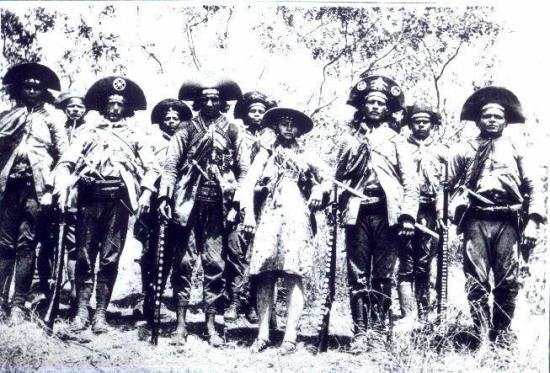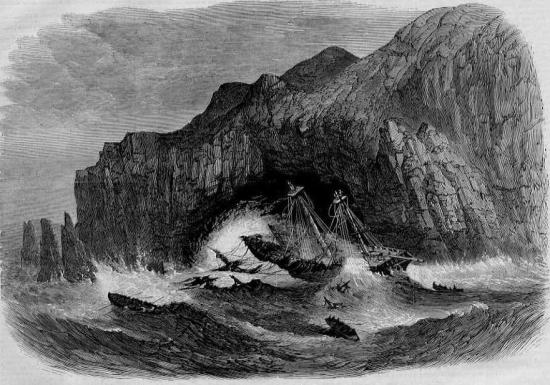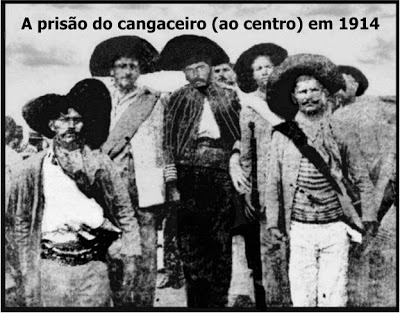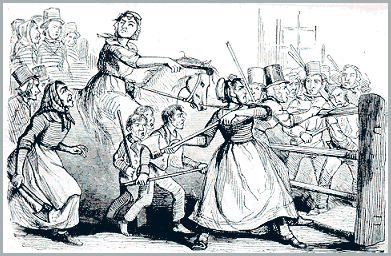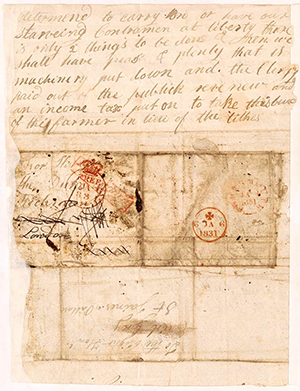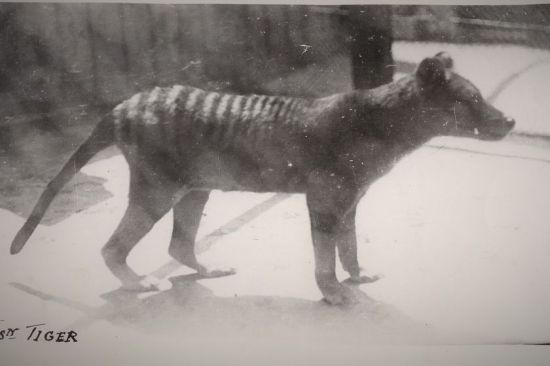
Australia’s vast and mostly arid northwest had been largely ignored until the 1880s when its almost infinite acres attracted sheep and cattle farming and its seas an embryonic pearling industry. As settlement increased, the newcomers increasingly encroached on the traditional lands of the many indigenous groups in what would become known as the Kimberley region. Some of these groups resisted, others seemed to fade away as the frontier pushed relentlessly north and east. The Bunuba were not inclined to simply walk off their land and nurtured an ongoing resistance that eventually produced an outlaw hero.
Jandamarra (Jandamurra) was already approaching initiation age when his country became the object of commercial and political interest. At around eleven years of age he was taken into employment on a local station to be trained as a stockman. One of the attractions for settling the Kimberley was the availability of cheap indigenous workers for the labour intensive pastoral and pearling enterprises. The settlers hoped that if they got the ‘natives’ when they were young they could at once be dispossessed of their land and trained as useful hands. Jandamarra appeared to be the ideal type of such conversions, quickly excelling at the necessary skills and eventually also becoming a crack rifle shot. Although he was unusually short for a Bunuba man – they were typically six-foot or more – he had great speed and agility, leading to the settlers nicknaming him ‘Pigeon’.
Working and living in the company of the settlers caused Jandamarra to grow up without being initiated into the spiritual secrets that would rightly have belonged to a Bunuba man. Aboriginal belief revolves around the sanctity of the land and everything within it and upon it. Bound up with this spiritual system are interrelated social, economic, political and legal systems. Once the ‘law’ is lost or untaught, so the individual is disadvantaged – potentially lethally – in the Aboriginal world. Although Jandamarra would come to know his country, its gullies, hills, trails and caves intimately, he was never fully a man in Bunuba society.
None of these matters worried Jandamarra, it seems. He was content to work for the settlers and even to become a ‘blacktracker’ or adjunct member of the police force and take part in tracking down other Aboriginal men and women wanted by the law. There were many of these in the Kimberley of the 1880s. As settlement increased, so did resistance to it. Stock were speared, supplies stolen and whites attacked by one or usually small groups of Aborigines. The settlers reacted with violence based on fear as much as racism and there was an ongoing level of attack and counter-attack as Aborigines sought to stem the unstoppable advances of the settlers and they sought to ‘disperse’ them so their stock could graze the grassland and drink from the waterholes.
A noted Bunuba warrior of the time was a man named Ellemarra. Through the late 1880s he offered fierce and ongoing resistance to the settlers, often being arrested but usually escaping again. So dangerous did Ellemarra become that the settlers called for ‘the whole tribe of natives inhabiting the Napier Range to be outlawed’.[i] While there was no official proclamation of outlawry, the settlers were increasingly prepared to take the law in to their own hands and to protect themselves by hunting and gunning down those Aborigines they believed meant to harm them. Ellemarra was among the most wanted of the resisters and Jandamarra, caught between the worlds of white and black, formed part of a police party sent out to bring him in, effectively going against his own people. Ellemarra was flogged and imprisoned. He eventually escaped again but was recaptured and chained with a group of other Aboriginal prisoners. Possibly with the help of Jandamarra, Ellemarra managed to break his chains and escape again.
Now Jandamarra had to again take part in tracking Ellemarra down, under the command of a policeman named Richardson. Jandamarra led the policeman to his countrymen and they were captured in late October, 1894, the largest haul of resisters the police had yet netted. Richardson delayed returning with them in order to gain a greater allowance for being on active duty. It was a fatal mistake.
The Bunuba men naturally placed pressure on Jandamarra to let them go and acknowledge his true Bunuba identity. Eventually Jandamarra accepted their argument released Ellemarra and shot Richardson dead while he slept. The two men then released their comrades, took the guns and ammunition and disappeared into the bush. They soon raised a large group of Bunuba and engaged in a large-scale battle with police sent to track them down for the murders of a number of settlers in November. Ellemarra and a number of Bunuba women were killed in the shooting and Jandamarra seriously wounded. He managed to escape, evading the pursuit through his unparalleled knowledge of the country.
While Jandamarra was in hiding, recovering from his wounds, the government sent police reinforcements to the Kimberley as quickly as was possible at the time. An undeclared war was in progress. It would make Jandamarra a great hero to his people and their struggle. The police had almost convinced themselves that the Bunuba resistance was broken when rumours of Jandamarra’s survival were confirmed in May, 1885. Jandamarra and the Bunuba now conducted a guerrilla war. Police continually came across the outlaw’s tracks, only to lose them in the rocks and ravines.
Bunuba people also misled the police with false information, making the police look like fools, further demoralising them. In October 1895, Jandamarra became over-confident and failed to post a guard around his camp. He and his band were surprised by the police. Employing his legendary agility, Jandamarra disappeared into a convenient cave, but most of his band was captured.
Over the following months Jandamarra concentrated on harassing and demoralising police and settlers by demonstrating his mastery of the country and of stealth. Robbing storehouses, visiting police camps at night, shadowing police patrols, always ensuring they knew that he had been among them. Jandamarra, the uninitiated man now came to be seen by his own people as a lawman, an individual with great spiritual authority and great magical powers. He was said to be able to turn himself into a bird and to fly away from the police. He was also said to be invulnerable because his real spirit was hidden at his hideout and it was only his animated body that crossed his country to taunt the police and the settlers.
This went on for many months, interspersed with moments of violence and the besieging of the police outpost at Lillimooroola station, immediately below the limestone cliffs that marked the easily defended edge of Bunuba country. Towards the end of 1896 the settlers began forcing their cattle deep into Bunuba land, effectively going behind Jandamarra’s front line. The Bunuba resistance went back into action with psychological warfare and attacks on settlers. The police cranked up their attempts to end the conflict, committing more atrocities against the Bunuba, but had no more success than in their previous attempts.
But within the police ranks was a secret weapon. An Aboriginal member of the force named Micki was from far outside Bunuba country and had no loyalty towards Jandamarra’s fight. He was also considered to have magical powers by the Aborigines. On March 23, 1897 Micki was solely responsible for capturing five of Jandamarra’s band. Jandamarra attempted to free his comrades but was badly wounded. He was pursued through the ranges as he struggled towards his hideout cave at Tunnel Creek, thirty miles east. He made it back inside the cave through one of its many secret entrances, but Micki was waiting for him outside the cave’s main entrance. On April Fool’s Day, the two lawmen faced each other with Winchester rifles. Jandamarra missed and Micki’s shot sent him hurtling down a 100-foot cliff. The police reached the scene, confirmed the body was that of their feared foe and then chopped the head from the torso with a tomahawk. It was reportedly despatched to adorn the trophy wall of a British arms manufacturer.
The Bunuba resistance was finally broken with Jandamarra’s death. But his legend lives on, becoming a powerful oral tradition in the Kimberley. [ii]
NOTES
[i] Quoted in Pederson, H & Woorunmurra, B, Jandamarra and the Bunuba Resistance, 1995, p. 49. See also Aboriginal History 9:1, 1985, passim and p. 98, note 26.
[ii] In 2004 a folklife fieldwork project recorded further strong traditions about Jandamarra and his legend from his descendants. See ‘Report on the Western Australian Folklife Project, 2004’ National Library of Australia and WA Folklore Archive, Curtin University.
